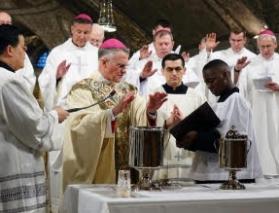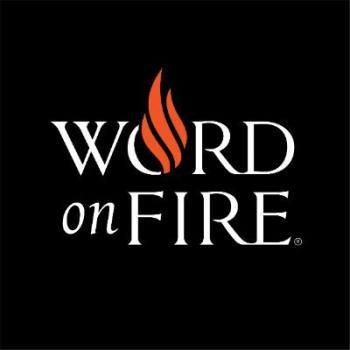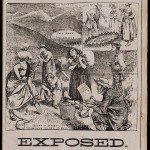One of the aspects of historical analysis is determining authorship. When it comes to authorship there are two predominant modes of thought. The first is that the author is the Apostle John, or John the son of Zebedee, as he is known in scripture. The other is that the author was part of the Johannine school of thought and a member of the Johannine community that wrote in the spirit of John. What we can do is compare the writing of the Gospel of John and the Johannine epistles to find some similarities. When these books are read the reader will notice much similarity in language, tone, and how the words are utilized. The similarities are so significant that there is an 86% match in how words are used.
1 John And The Early Church
The idea that John the Apostle is the author is one that went unchallenged until the twentieth century. The early tradition of the Christian church identifies John as the author. Theological heavyweights such as Irenaeus, Tertullian, and Dionysius of Alexandria say that the author John the Apostle of Christ. In his great work titled Against Heresies, Irenaeus says speaks of John testifying in his Epistle about the things he witnessed. The annotation of authorship from Dionysus is recorded by the great early church historian Eusebius. Tertullian has an interesting reason as to why John the Apostle is the author of 1 John. Though Tertullian gives many reasons, he explains that the knowledge of the humanity and divinity of Christ is expressed through what John saw in the transfiguration. These pieces of evidence are known as external evidence. They are called so because they occur outside of the epistle of 1 John. What does the internal evidence tell us about authorship?

Internal Evidence For Authorship
Internal evidence is evidence that we can see within the sacred text itself. 1 John is unique in that it does not follow the standard greeting formula that was common at the time. This lack of a standard greeting has led some to speculate that it is a sermon or homily. The author does not identify himself by name, but he is an individual as can bee seen from several references to himself in the singular form.
The author also writes with authority and is seen throughout the letter. This is a virtue of his apostolic authority. There is a chiastic pattern that is common between the Gospel of John and the epistles which would also link to John the Apostle. This is most attested to by 1:1 where the author claims to be an eyewitness.

Why did John write 1 John? There is not one audience in mind as is seen with the Apostle Paul and Galatians, but it is meant for a group of churches who are being challenged in the same way. There is some speculation that the seven churches listed in Revelation were the intended audience, but evidence does not really support that hypothesis. The likely audiences were the churches located around Ephesus in Asia Minor.
Ephesus, in modern day Turkey, is where John resided towards the end of his life. It was the capital of Asia Minor, was a center of trade, and the Roman Proconsul and there is much evidence to place John there. Papias and Polycarp were the earliest to use the letter in their own writings. They were situated near Ephesus, and they were also disciples of the apostle. Early church tradition in the writing of Irenaeus, Justin Martyr, and Polycrates and also place the Apostle in Ephesus.
What Heresy Was Being Addressed In 1 John?
What John was addressing in the churches is another area of debate. There are three ideologies that are contenders for the heresy being described. One is a heresy known as cerinthianism. This ideology comes from a figure in the early church named Cerinthus and he is said to be taught by one of the disciples. Cerinthus denied some aspect of Christ’s flesh, particularly after the resurrection and he could have possible been an early proponent of adoptionism.
Another heresy that some say John was writing about was Gnosticism. We know from history that this movement was gaining substantial steam in Asia Minor. Gnosticism was able to cloche itself in the Christian message, so it was easy for someone with little knowledge to fall victim to it. It is an interesting belief system that essentially teaches that matter is evil and only those with the secret knowledge will be saved. Since all matter is evil there is no way that the incarnation is possible.
The third candidate for the opponents of John are what is known as Docetists. Some call them proto-Gnostics because some of their beliefs were made popular and spread by Gnostics. This group gets its name from the Greek word dokein which means “to appear” or “to seem”. In their view Christ only appeared to be human, but he really was not. Docetism is part of what would become Gnosticism and therefore the issue that John was addressing to his audience.
This historical analysis tells us who wrote 1 John, who the audience was, the opponents/occasion, and the general location. Understanding these things is essential to interpreting 1 John. John was an eyewitness to Jesus and walked, talked, and saw him die on the cross. He is giving eyewitness testimony to his humanity and his divinity. The letter was written to a group of churches in Asia Minor that were experiencing the challenge of Docetism. John wrote to reassure the church that the Jesus that he has preached to them, using his apostolic witness, is the true Jesus and therefore the true faith.
Interview About 1 John
I was recently interviewed by Gary Michuta on his Hands on Apologetics radio program that airs daily on Virgin Most Powerful Radio. Below is our discussion on 1 John.
















